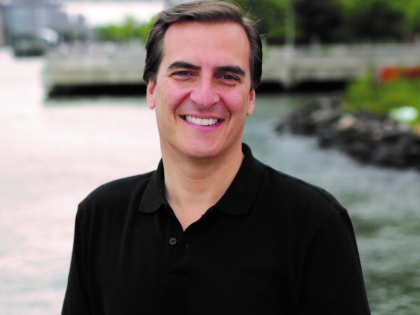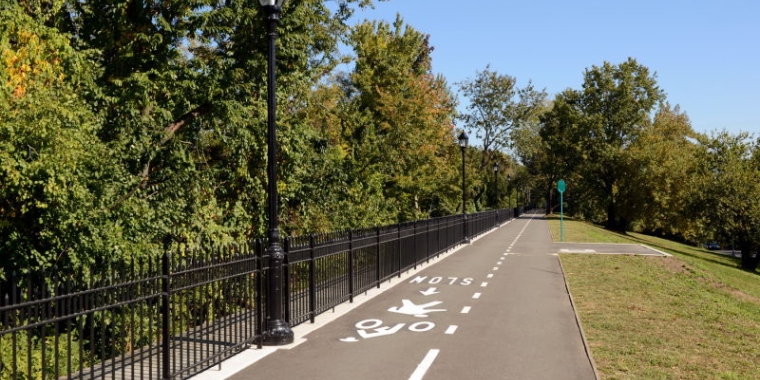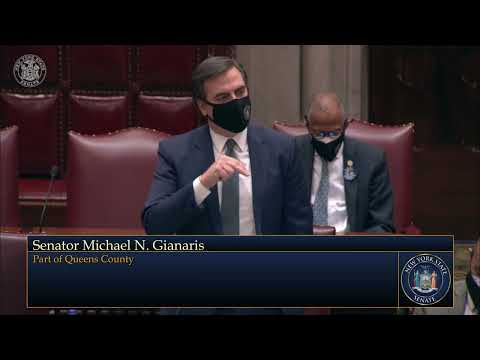
NYC Parks’ Ridgewood Reservoir Designated as a Class I Freshwater Wetland
January 8, 2019
-
ISSUE:
- Parks
- New York Reservoirs
- Ridgewood
- Queens

NYC H2O is thrilled to announce that the New York State Department of Environmental Conservation (DEC) designated the historic Ridgewood Reservoir as a Class I freshwater wetland on December 23, 2018. This designation helps guarantee that all three basins of the Reservoir on the Brooklyn-Queens border, in Highland Park, will be permanently protected as a natural area.
Wetlands are some of the most biologically productive natural ecosystems on the planet and as such are protected by the Federal Clean Water Act of 1972 as well as the New York State Freshwater Protection Act of 1975. This marks the first addition of a protected freshwater wetland to the DEC’s maps since they were published in 1988 (Brooklyn) and 1995 (Queens).
Wetlands that are designated Class 1 by New York State carry special significance: it is a designation that applies only when threatened and endangered species have been observed on the site.
The following species have been observed at the Reservoir and are listed as threatened or endangered in NY State.
● Late-flowering boneset (Eupatorium serotinum)
● Fringed boneset (Eupatorium hyssopifolium var laciniatum)
● Globe-fruited ludwigia (Ludwigia sphaerocarpa)
● Short-Eared Owl (Asio flammeus)
● Pied-Billed Grebe (Podilymbus podiceps).
The Reservoir provides a habitat for 175 species of plants and 163 species of birds and dozens other animal species. Many species of birds visit during their migration along the Atlantic Flyway and use the Reservoir as a sort of 'rest stop'. This opportunity to feed and re-energize is crucial during their long flights, both northbound and southbound, which can often exceed 500 miles.
As New York City has noted in official planning documents: “Wetlands improve water quality and sequester carbon dioxide. They control floods, capture stormwater runoff, and moderate storm surges. They provide habitat for local and migratory birds, fish and other wildlife. These unique, ecologically-rich areas also present a unique opportunity for New Yorkers to observe wildlife and to undertake other quiet, contemplative recreation."
NYC H2O, a nonprofit that provides education programs on New York City’s water system and ecology, strongly advocated for the DEC Class I freshwater wetland determination for the Ridgewood Reservoir. NYC H2O wrote the successful New York State and Federal Historic Register Application for the Reservoir in 2017.
NYC H2O’s Executive Director Matt Malina notes, “The Ridgewood Reservoir is a majestic place. Its Class I wetland designation protects it as an ecological treasure and allows the public to discover this treasure today and for generations to come. In the course of bringing a new generation of New Yorkers to visit and experience the site, we realized that that we had become stakeholders in advocating for its preservation and protection. The support of DEC Commissioner Basil Seggos, elected officials, community leaders and organizations has been critical to preventing the Reservoir’s demolition, designating it as a historic site, protecting its wetlands and in advocating for its future.”
Since 2014, NYC H2O has brought over 4,000 Brooklyn and Queens students on free Water Ecology and Engineering Field Trips to the historic Ridgewood Reservoir to experience New York City’s water system up close and be inspired by its wetlands ecology as they learn about how NYC relies on nature for clean water.
Statements from Key Supporters of the Class I Wetland Designation on its Importance:
Congresswoman Nydia M. Velázquez (D-NY) said: “The Ridgewood Reservoir is a local ecological gem and this new designation will ensure it is preserved for future generations. Not only will this mean recreational opportunities for New Yorkers to enjoy the outdoors, but also hundreds of plant and animal species will be protected. I thank NYC H2O for their work in moving this process forward and look forward to collaborating with them and all supporters of the Reservoir in coming years.”
State Senator Joseph P. Addabbo, Jr. agreed, “The designation of the Ridgewood Reservoir as a Class I freshwater wetland will help protect the beauty and historic significance of this neighborhood gem,” said State Senator Joseph P. Addabbo, Jr. “As a member of the Environmental Conservation Committee, I am proud to have worked together with my colleagues in government, along with the Ridgewood community and groups like NYC H2O to help bring this important milestone to fruition.”
New York State Senator Michael Gianaris said "This is an important milestone for Queens and Brooklyn. The Ridgewood Reservoir is part of our history and, with this new protection, this ecosystem and green space will be part of our future for years to come."
“I was pleased to learn that the New York State Department of Environmental Conservation (DEC) designated the Ridgewood Reservoir as a Class I freshwater wetland. This designation will ensure that the Ridgewood Reservoir is preserved and protected for years to come and will remain a great resource for our community,” said Assemblyman Andrew Hevesi.
“As a strong supporter of preserving the Ridgewood Reservoir, my thanks to NYS DEC for designating this wonderful place as a wetland” said Assemblywoman Catherine Nolan. “Thank you to Queens Community Board 5, NYC H2O and all of the residents and organizations that have advocated for the reservoir over the last decade. This designation will go a long way to preserving the Ridgewood Reservoir"
Queens Borough President Melinda Katz “Ridgewood Reservoir is an ecological treasure that is home to an abundant and diverse array of plants and wildlife,” said Queens Borough President Melinda Katz. “As such, the Ridgewood Reservoir deserves to be protected. The designation of Ridgewood Reservoir as a Class I freshwater wetland will ensure that this precious ecosystem, and the species that rely on it, will have the opportunity to thrive.”
Brooklyn Borough President Eric Adams “I’m proud to support the preservation and historical recognition of the Ridgewood Reservoir, an important landmark in Brooklyn’s story. Its designation as a Class I freshwater wetland will help protect this natural treasure, and the wildlife that call it home, for generations to come.”
New York State Assemblyman Mike Miller “The recent designation of the Ridgewood Reservoir as a Class I wetland is wonderful news and a great victory for the community and area activists along with myself and the other elected officials. We have advocated and supported this designation because the Ridgewood Reservoir is a cultural and ecological treasure. The Reservoir contains over 100 species of birds and wildlife. This designation for the reservoir will forever protect it from development and preserve it for generations to come.”
City Council Member Robert Holden “Many people have worked long and hard to preserve the Ridgewood Reservoir and ensure it is protected for years to come,” said Council Member Holden. “I commend the efforts of NYCH2O, and I believe that earning another designation for this site is a testament to their commitment to our local environment.”
“The designation of the Ridgewood Reservoir as a Class 1 Wetland is a victory for the environmental community and for our city as a whole,” said Council Member Rafael Espinal. “Wetlands absorb carbon dioxide, mitigate stormwater runoff, and allow biodiversity to flourish. At a time when climate change is intensifying, they are exactly the kind of natural solutions we need to avoid worst-case scenarios. I commend the DEC on this move, and NYC H2O for their tireless advocacy.”
“The Ridgewood Reservoir’s designation as a Class I Freshwater Wetland is a huge victory for the community and overall environmental health of New York City,” said Council Member Antonio Reynoso. “The designation as a Class I Freshwater Wetland will permanently protect the reservoir and ensure that it remains a natural haven for the species that have come to rely on it. The environmental health of New York City is more crucial than ever, and I thank NYC H2O, the New York State Department of Environmental Conservation, and all involved actors for helping us work toward this goal.”
Rob Jett: Community Organizer, Friends of Ridgewood Reservoir
On August 3rd, 2007 fourteen people from Brooklyn and Queens came together and were then joined by longtime residents, artists, educators, historical preservationists, conservation and ecology organizations and politicians to help ensure that this jewel nestled along the Brooklyn/Queens border would be safe from development. Words cannot express the emotions I feel knowing that generations of children will get to appreciate the history and nature of the Ridgewood Reservoir.
Marit Larson, NYC Parks Chief of Natural Resources stated “NYC Parks has worked to study and maintain the Ridgewood Reservoir as a recreational amenity and a habitat for rare flora and fauna. NYC Parks and DEC ecologists and natural resource managers worked hand-in-hand, conducting the vegetation and hydrologic delineation to produce new wetland maps using standard scientific methods, for the classification. This designation affirms the site's importance and provides the maximum ecological protection for this exceptional urban wetland community. At over 50 acres, the Ridgewood Reservoir is one of the most unique natural and cultural resource in NYC Parks' portfolio. We are excited it will be protected for the benefit of New Yorkers and wildlife now and in the future.”
The Historic Ridgewood Reservoir The historic Ridgewood Reservoir is a 50 acre natural oasis that serves diverse communities on the border of Brooklyn and Queens. The Reservoir is located within Highland Park which is run by the New York City Parks Department. It was built in 1859 to supply high quality water to the once-independent City of Brooklyn. The ambitions of Brooklyn’s builders in the face of rapid growth resulted in an expanding reservoir system that routed water from Queens and Nassau counties to the taps, hydrants and factories of the city. Despite its increasingly vast scale the system did not suffice to quench the needs of the fourth largest city in the country. Water thus helped drive Brooklyn’s 1898 consolidation with New York City. The Reservoir itself only became obsolete in the 1950s with the addition of new reservoirs in the Catskill Mountains.
By 1989, the Reservoir was almost entirely drained. Since then, nature took its own course and has provided New Yorkers with a perfect case study of ecological succession. Its wetlands include a bog as well as a lush and dense forest that has grown in the two outside basins. A large freshwater pond in the middle basin provides a home to migrating and year-round waterfowl. That pond is on the path of the Atlantic Flyway and is an important source of freshwater to migrating birds. Each basin is home to a unique variety of flora.
Today we see a 19th century feat of engineering whose intact, large basins are surrounded by parkland. The Ridgewood Reservoir provides us with a cautionary and ultimately inspiring tale as to how citizens can work together to protect a site whose adaptive reuse ensues from its being reclaimed by nature.
The NY State and National Historic Register application is available for download here: http://www.nych2o.org/ridgewood-reservoir-historic-register.html Historic and modern photos of the Reservoir are available here. https://bit.ly/2LrP7o8
Share this Article or Press Release
Newsroom
Go to NewsroomSenator Gianaris' Floor Speech on Redistricting
February 3, 2022

Senator Gianaris Joins Urban Upbound JobsPlus Announcement
January 25, 2022

New York's Emergency Rental Assistance Program
January 24, 2022

